By Mitch Freedman:
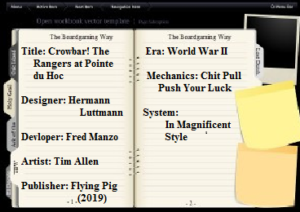 There are lots of things to say about this game – the dramatic subject, the smooth AI mechanics, the really attractive game board and pieces, the elegant rules – but I am afraid that I probably won’t get to all of them.
There are lots of things to say about this game – the dramatic subject, the smooth AI mechanics, the really attractive game board and pieces, the elegant rules – but I am afraid that I probably won’t get to all of them.
Instead, a lot of this review will probably turn into an appreciation of the designer. That’s what you get with a conflict of interest. Still, all of it will be accurate. I promise.
The conflict is that Hermann is a friend of mine. I can’t count the number of games we have played together or the bottles of beer he has brought to our conflicts.
And life changes and his commute to our games has turned from half an hour to a day or so.
So, what can I say when the timing of his move comes just when I get my hands on one of his best games, and I have to be scrupulously honest to do a review for the gaming community?
I’ll start with something negative.
Hermann doesn’t have the track record of Martin Wallace, my favorite game designer. Still, like Wallace, his games go from straight-laced historical Civil War battles to the wildest of sci-fi and fantasy, and his research is really very thorough.
He also has a remarkable knack of dealing with variables – something that is essential to designing a good war game. You aren’t repeating history, after all. You are recreating the historic situation, and throwing in all the “might have beens” that actually might have happened.
Which is what he does in Crowbar, and does it very well.
Crowbar! is designed as a solitaire game, but it can be played by two or three or even four people. He provides scenarios for that too. Why not?
It is about one dramatic slice of action on D-Day, the massive invasion of Europe that was the real beginning of the end of the Nazis.
This slice was given to Darby’s Rangers – a newly-created special unit that set the model for today’s Army Rangers – who faced something none of the 160,000 other American and Canadian troops that hit the beaches on D-Day did – 100-foot cliff.
Somewhere behind the cliff were four assault guns that were hidden, and were quite capable of ripping the armada of landing craft to shreds. Not all of it, of course, but enough to cause real damage to the invasion troops in the critical first few days.
So, what Luttmann’s game does is let you play hide and seek.
There are 20 hidden gun markers in the pre-game set-up that you flip upside down and place randomly in positions across the map. Prepared gun emplacement spaces get two each, but the markers you put in might turn out to be dummy guns or a German officer who surrenders. Happy hunting.
You also get 24 incoming naval fire markers. But, you don’t use them all. Instead, you roll a die, add 10 to it, and that is the number you can use to cause damage anywhere you want. You can try to seek out the hidden guns, of course (but each hit will only damage one unit), or try and clear the prepared positions that the Germans set up defending the cliff and the beach.
Oh yes, just two markers can be placed on any single position. And, the damage each marker does vary (it is printed on the hidden side). Some are dummies.
Yes, Hermann has put a lot of uncertainty in this little combat exercise. That is, I think, what is called “realistic.” You can just call it the uncertainty of combat.
A lot of what makes Crowbar work is its mix of rigid and unexpected. There are 12 landing craft carrying the Rangers to the beach, and you can’t quite be sure when or if they will be damaged, or when they will actually get to the beach. Each is in a column that runs from the landing zone to the top of the map, and only one Ranger unit can be in each. If one unit in a key column is killed, you can always shift another unit in an adjoining sector to do the job. (No, the Germans don’t have to follow that restriction.)
Units move, and units do damage. And, Luttmann has given players four innovative dice to roll to do those things. You roll one at a time to move, for example, and you are likely – but not at all certain – to move one or two boxes. You can press your luck and roll the second die, and you might move again or you might just stop or lose someone in your squad.
Want to move some more, roll the third or fourth die, but the odds of something bad go up as the colors change.
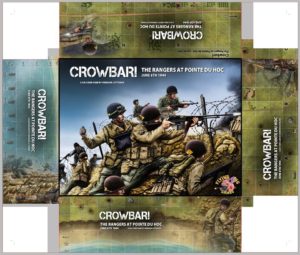
This is the box cover to Flying Pigs’ upcoming “The Rangers at Pointe du Hoc.” Hermann Luttmann is the designer and I’m its developer. Tim Allen did the map. It’s based on Herm’s “In Magnificent Style.” But it has many new features. Although, it is still a solitaire game.
There are random events for each side – both good and bad naturally – and command bonuses, and lots of other little goodies to make the game interesting.
It takes a bit of time to learn how to make all the elements of Crowbar mesh together but there are handy charts and player aides that give you everything you need.
And if it takes you a while to get familiar with the game, well it took years to plan the full Normandy Invasion, and the allies rehearsed it for months.
The good news is that, when you play it for the first time, you will quickly get into the mechanics. If you don’t finish – I certainly didn’t get close to doing that – you can put it away and hit the beach later.
Of course, your troops won’t hit the beaches the same way they did before, and the German counter-attack won’t be the same. It never will.
But I can guarantee that you will get better every time you play. That’s built into this game too.
Games Resources:


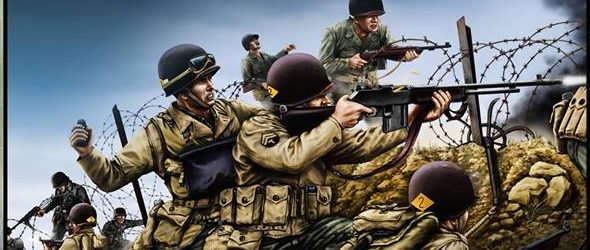
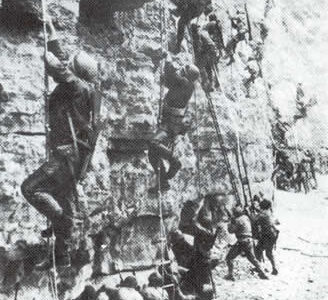
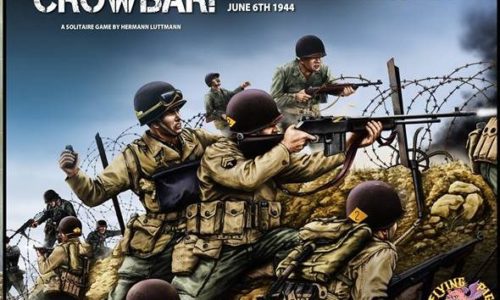
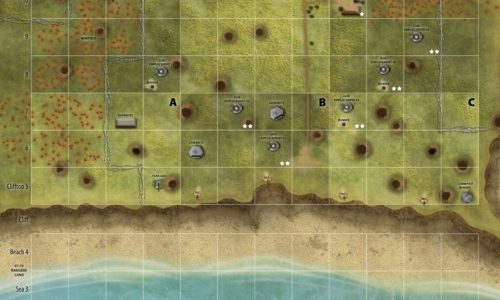
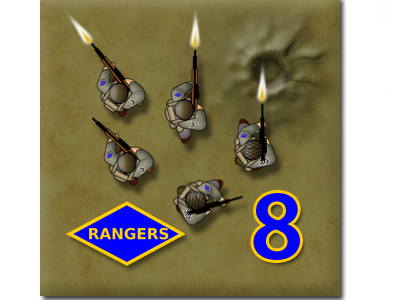
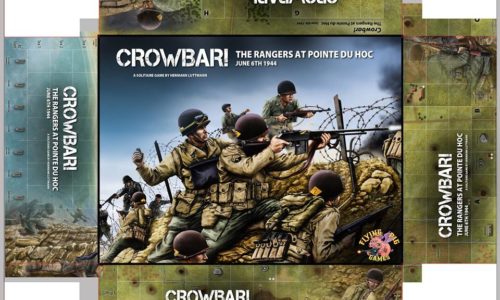
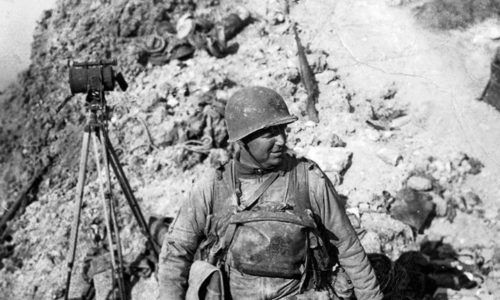
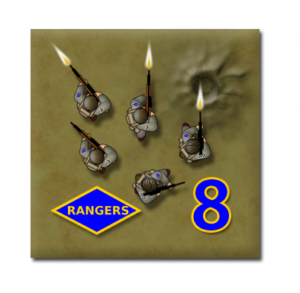
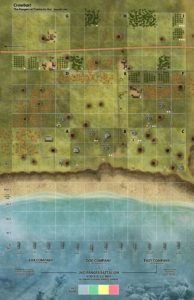
 Crowbar! The Rangers at Pointe du Hoc BGG Page:
Crowbar! The Rangers at Pointe du Hoc BGG Page: 





